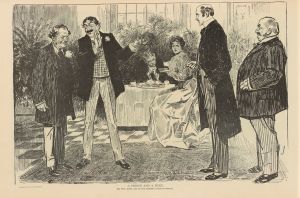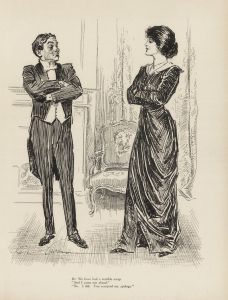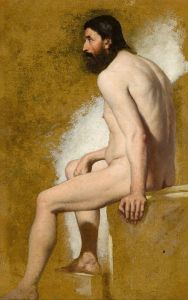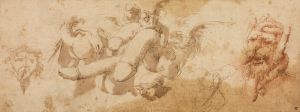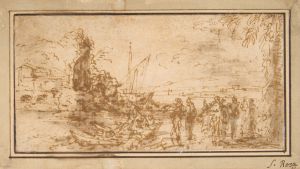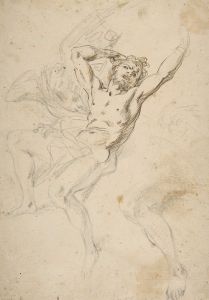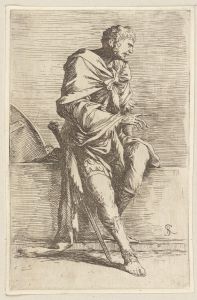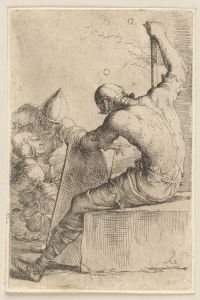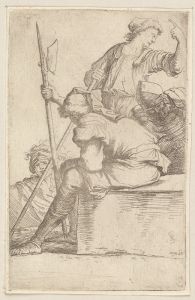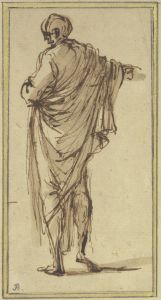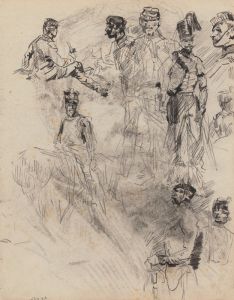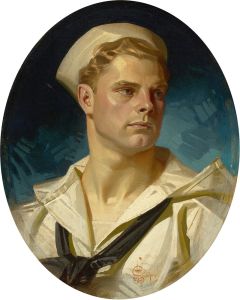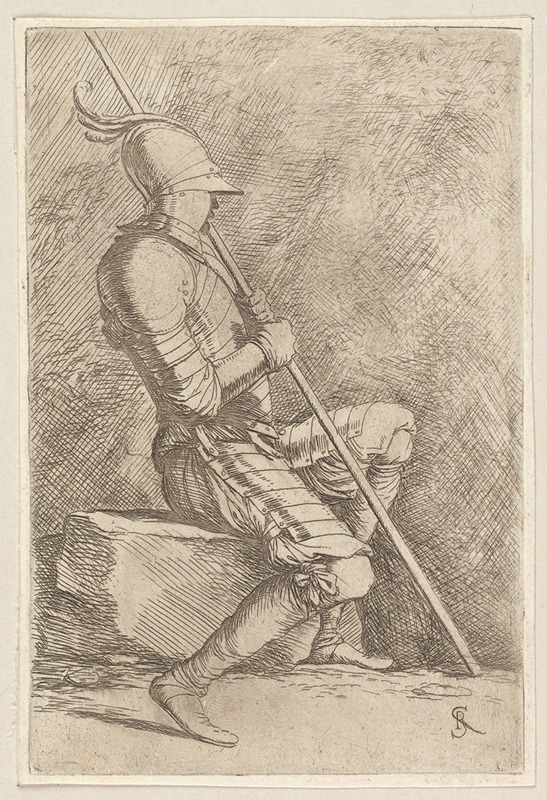
Soldier, Seated, in a Helmet, Holding a Cane
A hand-painted replica of Salvator Rosa’s masterpiece Soldier, Seated, in a Helmet, Holding a Cane, meticulously crafted by professional artists to capture the true essence of the original. Each piece is created with museum-quality canvas and rare mineral pigments, carefully painted by experienced artists with delicate brushstrokes and rich, layered colors to perfectly recreate the texture of the original artwork. Unlike machine-printed reproductions, this hand-painted version brings the painting to life, infused with the artist’s emotions and skill in every stroke. Whether for personal collection or home decoration, it instantly elevates the artistic atmosphere of any space.
"Soldier, Seated, in a Helmet, Holding a Cane" is a painting by the Italian Baroque artist Salvator Rosa, known for his diverse talents as a painter, poet, and printmaker. Rosa was born in 1615 in Arenella, near Naples, and became one of the most unconventional figures of the 17th-century art world. His works often reflect a rebellious spirit and a penchant for dramatic, often dark themes, which set him apart from many of his contemporaries.
This particular painting, "Soldier, Seated, in a Helmet, Holding a Cane," exemplifies Rosa's interest in military subjects and his ability to capture the psychological depth of his figures. The painting depicts a soldier seated, wearing a helmet, and holding a cane, which suggests a moment of rest or contemplation. The soldier's attire and the presence of the helmet indicate his role and status, while the cane may symbolize authority or a moment of pause in his duties.
Rosa's use of chiaroscuro, the contrast between light and dark, is evident in this work, highlighting the soldier's features and creating a sense of depth and volume. This technique was a hallmark of Baroque art, used to evoke emotion and focus the viewer's attention on the subject. The somber palette and the introspective pose of the soldier are characteristic of Rosa's style, which often conveyed a sense of melancholy and introspection.
The painting reflects Rosa's interest in the human condition and the complexities of life, themes that permeate much of his work. His soldiers are not merely representations of military might but are often depicted in moments of reflection, suggesting a deeper narrative beyond the battlefield. This approach was somewhat atypical for the time, as many artists focused on glorifying military achievements rather than exploring the personal experiences of soldiers.
Salvator Rosa's career was marked by his independence and his refusal to conform to the artistic norms of his time. He was associated with the Neapolitan school of painting but developed a distinctive style that combined elements of realism and romanticism. His works often included landscapes, historical scenes, and allegorical subjects, infused with a sense of drama and emotion.
"Soldier, Seated, in a Helmet, Holding a Cane" is a testament to Rosa's skill in capturing the essence of his subjects and his ability to convey complex emotions through his art. While the painting itself may not be as widely recognized as some of his other works, it remains an important example of his contribution to Baroque art and his exploration of themes related to human experience and emotion.
Rosa's legacy extends beyond his paintings; he was also a noted satirist and poet, using his art and writings to critique the society and politics of his time. His multifaceted talents and his willingness to challenge conventions have secured his place as a significant figure in the history of art.





